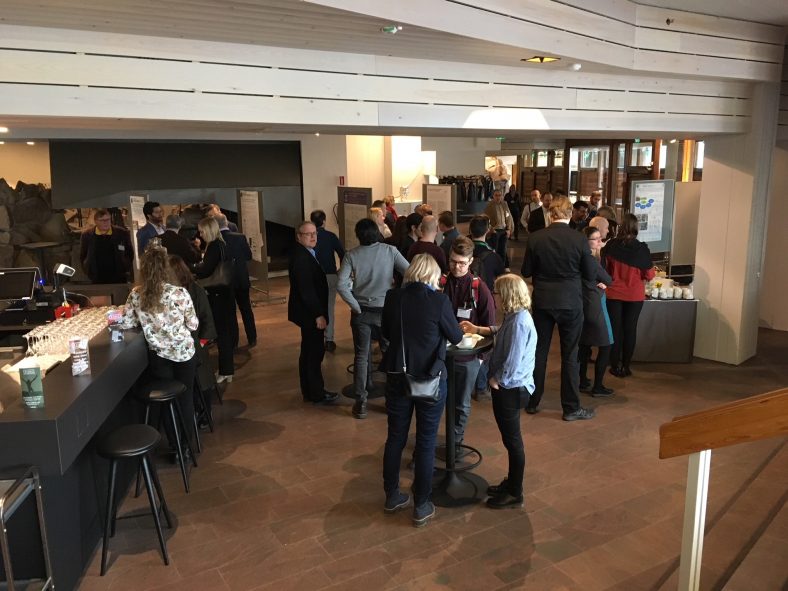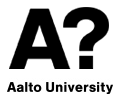On April 6 this year, I organized the event “Finnish Young Scientist Forum on Catalysis 2018 (FYSFC2018)” for the Finnish Catalysis Society. In the newest Katse 1/2018 newsletter of the society, a report of the event is published by my colleague José Luis González Escobedo, who is a doctoral student at Aalto University. A copy of the report is reposted in Catalysis Professor’s Open with permission of the author and of the Finnish Catalysis Society.
3rd Finnish Young Scientist Forum on Catalysis
Last April 6, 2018, the third Finnish Young Scientist Forum on Catalysis (FYSFC) took place in Otaniemi, Espoo, organized by the Finnish Catalysis Society. The Forum is a relaxed, yearly event, where PhD students from Finnish Universities get the chance to present their work to their peers, professors, and other Catalysis professionals. The event is also a great opportunity for the members of the Catalysis community in Finland to network and catch up with each other. This year, the organization of the Forum was in charge of Professor Riikka Puurunen from Aalto University. The venue was the landmark Dipoli building in Aalto University’s Otaniemi campus.

Participants of the FYSFC 2018 enjoying a coffee break in Dipoli building’s Juhla-aula. Photo by Riikka Puurunen.
This year, 55 participants attended the FYSFC, of which 12 delivered oral presentations. Additionally, the event hosted for the first time a poster section, featuring 10 presentations. Two students got the chance to pitch their posters to the audience before the lunch break.
Remarkably, the Forum kicked off with an engaging plenary lecture by Professor Krijn de Jong from Utrecht University, the Netherlands. One additional highlight of the FYSFC 2018 was the declaration of the winner of the competition for the new logo of the Finnish Catalysis Society. As in previous occasions, the Forum was followed by the annual meeting of the Society and closed with a buffet dinner and get-together.
The title of Professor de Jong’s lecture was ’Effects of size and location of metal nanoparticles in catalysis’. The professor opened the lecture by highlighting various challenges that climate change poses, which catalysis can address. He then focused on Fischer-Tropsch technology for the deployment of syngas as an alternative feedstock. With this instance as a case study, he proceeded to describe the means to control the size and location of particles in Fischer-Tropsch catalysts, as well as their effects on activity, selectivity, and stability.

Professor Krijn de Jong interacting with the audience. Photo by Riikka Puurunen.
Some of the PhD students who participated in the event also delivered oral presentations on Fischer-Tropsch synthesis and water-gas shift. Other popular topics included aqueous phase reforming and upgrading of biomass derivatives such as furfural, butanol, fatty acids, and guaiacol. Furthermore, there were presentations dealing with biomass-based catalysts for water purification, methanol-fueled solid oxide fuel cells, and mesoporous nanoparticles as ligands for palladium complexes in the Heck reaction.
In autumn 2017, the Finnish Catalysis Society opened a call for designs to replace its old logo. The competition closed in February 15, 2018 and the winner was announced in the FYSFC by Professor Juha Lehtonen, chairman of the Society. Minttu Kauppinen from the University of Jyväskylä authored the winning design, which she unveiled before the audience.

Unveiling of the new logo of the Finnish Catalysis Society. Photo by Riikka Puurunen.
The FYSFC 2018 closed with a brief farewell by Professor Lehtonen, who also invited the participants to join the gathering and dinner, which would follow the annual meeting of the Finnish Catalysis Society. The participants left the Dipoli building after a fruitful day of learning, sharing, and commenting. As the event combined quality research with a comfortable, welcoming environment, one could only look forward to next year’s Finnish Young Scientist Forum on Catalysis.
José Luis González Escobedo


Pingback: Prof. De Jong’s lecture on catalysis in Aalto University Youtube channel | Catalysis Professor's Open